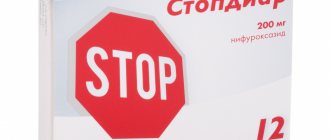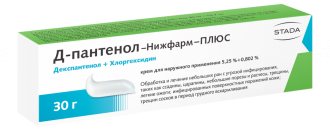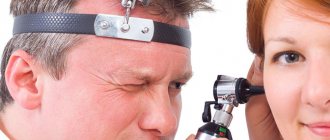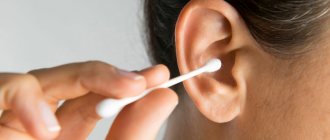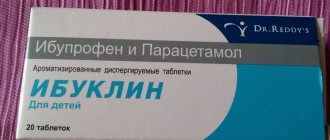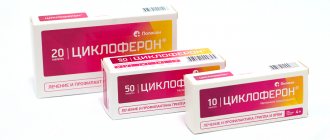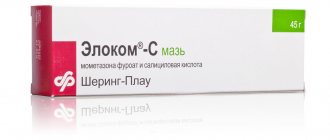What is Ibuklin
The drug contains two active ingredients: ibuprofen and paracetamol. These are effective non-steroidal compounds with analgesic properties. Together they have a more complete therapeutic effect:
- Ibuprofen, with its moderate analgesic properties, more significantly reduces the intensity of inflammation;
- Paracetamol is a good analgesic and relieves painful symptoms for a long time.
Both substances affect thermoregulation centers and normalize body temperature during fever and acute infectious processes.
Ibuklin is produced:
- for adults: in the form of oblong capsules with a film shell: orange. In 1 piece contains 400 mg of ibuprofen and 325 mg of paracetamol;
- for children: Ibuprofen Junior with a measuring spoon in the package: non-coated soluble tablets, pink, with small inclusions, have a mint smell, ibuprofen content - 100 mg, paracetamol - 125 mg.
Additional components of the drug include: talc, silicon, starch, magnesium stearate.
What problems does it help with?
Tablets are prescribed for pathological conditions in which inflammatory processes, pain, and increased body temperature occur. These conditions include:
- fever accompanied by fever and infections (including colds);
- muscle pain;
- pain in the area of peripheral nerves as a result of non-infectious lesions;
- back pain caused by problems with the spine;
- tooth pain;
- joint pain due to the appearance of inflammatory reactions;
- painful menstruation.
Ibuklin is prescribed for symptomatic treatment, for inflammatory processes and elevated body temperature as part of general therapy. It does not affect the course of the disease and does not slow down its development.
Mechanism of action of Ibuklin
The active substances of NSAIDs inhibit the production of prostaglandins - pain mediators, and at the same time facilitate the proliferative and esudative period of inflammation. Ibuklin eliminates pain syndromes of various origins, reducing the severity of accompanying symptoms:
- reduces stiffness of limbs due to arthritis;
- eliminates malaise and fever during ARVI.
The drug is completely absorbed from the stomach into the bloodstream, the concentration reaches a maximum within 2 hours. Penetrates into biological fluids, including articular synovium. The effect of Ibuklin begins 15–20 minutes after administration and lasts up to 5–6 hours.
The drug has no effect on the duration and intensity of the disease, having only a symptomatic effect.
Indications
Ibuklin is used independently, as well as in complex treatment, to eliminate negative symptoms:
- for colds, respiratory infections, flu;
- myalgic attacks and neuralgia;
- acute and chronic pathology of the musculoskeletal system;
- dental problems;
- bruises, sprains and other physical injuries;
- postoperative syndrome;
- algomenorrhea;
- migraines.
Description of the drug
Today Ibuklin is used for various pains: dental, headache, muscle, menstrual. The drug is effective for the following problems:
- colds, accompanied by body aches and migraines;
- exacerbation of chronic pathologies of tissues and joints;
- in the first days after injury;
- toothache;
- period;
- inflammation of the reproductive organs.
The indications are identical for adults and children (the only difference is the dosage).
How to take Ibuklin
The pills are swallowed with water half an hour before meals or 2 hours after. There is no need to chew or grind them. General dosage recommendation:
- 1 capsule three times a day;
- the interval between doses is at least 4 hours;
- You are allowed to take up to 6 capsules per day;
- For people with liver disease, it is important to take a break of 8 hours, taking no more than 3 doses of the drug per day.
The maximum duration of treatment is up to 5 days. If symptoms do not subside, you should consult your doctor to prescribe another drug.
Ibuklin for children
Patients under 12 years of age are prescribed children's Ibuklin:
- children weighing up to 15 kg: no more than 3 tablets per day;
- with a body weight of 16–21 kg: 1 tablet up to 4 times during the day;
- with a weight from 22 to 40 kg: no more than 6 pcs. per day.
For convenience, the tablets can be diluted in a spoon of water before taking.
Adolescents 12 years of age and older are allowed the drug in an adult dosage: 1 capsule 2-3 times a day.
The recommended treatment period is 3 days, maximum 5 days.
Side effects
Among the possible negative reactions of the body while taking Ibuklin:
- epigastric pain, nausea, dry mouth;
- dizziness, development of anxiety;
- blood pressure surges, tachycardia;
- changes in laboratory blood parameters;
- swelling;
- increased sweating.
If severe symptoms develop, the possibility of individual intolerance to the drug should be excluded and the dosage should be reconsidered.
Drug interactions and compatibility with alcohol
When taking Ibuklin together with GCS, the risk of ulcerative lesions of the digestive tract and bleeding increases. The drug also increases the activity of antiplatelet agents, thrombolytics and anticoagulants, so their simultaneous use is not recommended.
Ibuklin reduces the effectiveness of diuretics and antihypertensive medications. And when taking antacids, the ability of the drug to be absorbed decreases.
The simultaneous use of Ibuklin and alcoholic beverages increases the load on the liver as a result of increased hepatotoxicity.
Contraindications
You should stop using the drug:
- in case of an allergic reaction to its components;
- with internal bleeding;
- for ulcerative processes of the stomach and intestines;
- severe renal, liver failure;
- inflammation of the optic nerve;
- bronchial asthma;
- polypous growths in the sinuses
- pathologies of the hematopoietic system;
- pregnant women in the last trimester.
The toxicity of Ibuklin increases when taken simultaneously with aspirin, anticoagulants, cyclosporine and gold.
IBUCLIN®
INSTRUCTIONS for use of the medicinal product for medical use IBUCLIN®
Registration number: P N011252/01
Trade name of the drug: Ibuklin®
INN or generic name of the drug: Ibuprofen + Paracetamol
Dosage form: film-coated tablets
Composition Each film-coated tablet contains: Active ingredients: ibuprofen 400 mg and paracetamol 325 mg. Excipients: microcrystalline cellulose 120 mg, corn starch 76 mg, glycerol 3 mg, sodium carboxymethyl starch (type A) 7 mg, colloidal silicon dioxide 5 mg, talc 8 mg, magnesium stearate 6 mg. Shell: hypromellose 6 pps 11.32 mg, sunset yellow dye (E110), aluminum varnish 1.78 mg, macrogol-6000 2.2 mg, talc 4.06 mg, titanium dioxide 0.16 mg, polysorbate-80 0, 16 mg, sorbic acid 0.16 mg, dimethicone 0.16 mg.
Description Capsule-shaped, orange-coated tablets with a score line on one side; For individual tablets, marbling of color is allowed.
Pharmacotherapeutic group: combined analgesic drug (NSAID + analgesic non-narcotic drug).
ATX code: M01AE51
Pharmacological properties
Pharmacodynamics A combined drug whose effect is determined by its constituent components. Ibuprofen is a nonsteroidal anti-inflammatory drug (NSAID) that has analgesic, anti-inflammatory, and antipyretic effects. By inhibiting cycloxygenase (COX) 1 and 2, it disrupts the metabolism of arachidonic acid, reduces the amount of prostaglandins (mediators of pain, inflammation and hyperthermic reaction), both in the site of inflammation and in healthy tissues, suppresses the exudative and proliferative phases of inflammation. Paracetamol - indiscriminately blocks COX, mainly in the central nervous system, has little effect on water-salt metabolism and the mucous membrane of the gastrointestinal tract (GIT). Has an analgesic and antipyretic effect. In inflamed tissues, peroxidases neutralize the effect of paracetamol on COX 1 and 2, which explains the low anti-inflammatory effect. The effectiveness of the combination is higher than that of individual components. Relieves arthralgia at rest and during movement, reduces morning stiffness and swelling of joints, and helps increase range of motion.
Pharmacokinetics
Ibuprofen. Absorption is high, quickly and almost completely absorbed from the gastrointestinal tract (GIT). The time to reach maximum concentration (TCmax) after oral administration is about 1-2 hours. Communication with blood plasma proteins is more than 90%. The half-life (T1/2) is about 2 hours. It slowly penetrates into the joint cavity, accumulates in the synovial fluid, creating higher concentrations in it than in the blood plasma. After absorption, about 60% of the pharmacologically inactive R-form is slowly transformed into the active S-form. Metabolized. More than 90% is excreted by the kidneys (no more than 1% unchanged) and, to a lesser extent, with bile in the form of metabolites and their conjugates.
Paracetamol. Absorption is high, binding to plasma proteins is less than 10% and increases slightly with overdose. Sulfate and glucuronide metabolites do not bind to plasma proteins even at relatively high concentrations. The Cmax value is 5-20 μg/ml, TCmax is 0.5-2 hours. Distributed fairly evenly in body fluids. Penetrates the blood-brain barrier. About 90-95% of paracetamol is metabolized in the liver to form inactive conjugates with glucuronic acid (60%), taurine (35%) and cysteine (3%), as well as a small amount of hydroxylated and deacetylated metabolites. A small portion of the drug is hydroxylated by microsomal enzymes to form highly active N-acetyl-n-benzoquinone imine, which binds to the sulfhydryl groups of glutathione. When glutathione reserves in the liver are depleted (in case of overdose), the enzyme systems of hepatocytes can be blocked, leading to the development of their necrosis. T1/2 – 2-3 hours. In patients with liver cirrhosis, T1/2 increases slightly. In elderly patients, drug clearance decreases and T1/2 increases. It is excreted by the kidneys mainly in the form of glucuronide and sulfate conjugates (less than 5% unchanged). Less than 1% of the administered dose of paracetamol passes into breast milk. In children, the ability to form conjugates with glucuronic acid is lower than in adults.
- - symptomatic treatment of infectious and inflammatory diseases (colds, flu), accompanied by fever, chills, headache, muscle and joint pain, sore throat;
- - myalgia;
- - neuralgia;
- - back pain;
- — joint pain, pain syndrome in inflammatory and degenerative diseases of the musculoskeletal system;
- - pain from bruises, sprains, dislocations, fractures;
- — post-traumatic and postoperative pain syndrome;
- - toothache;
- - algodismenorrhea (painful menstruation).
Indications for use
The drug is intended for symptomatic therapy, reducing pain and inflammation at the time of use, and does not affect the progression of the disease.
Contraindications for use: Increased individual sensitivity to the components of the drug (including other NSAIDs), peptic ulcer of the stomach and duodenum in the acute phase, gastrointestinal bleeding, severe renal failure (creatinine clearance (CC) less than 30 ml/min), complete or an incomplete combination of bronchial asthma, recurrent polyposis of the nose and paranasal sinuses and intolerance to acetylsalicylic acid or other NSAIDs (including a history), damage to the optic nerve, genetic absence of glucose-6-phosphate dehydrogenase, diseases of the blood system, the period after coronary artery bypass surgery; progressive kidney disease, severe liver failure or active liver disease, confirmed hyperkalemia, active gastrointestinal bleeding, inflammatory bowel disease, pregnancy (III trimester), children under 12 years of age.
Use during pregnancy and lactation In the first and second trimesters of pregnancy, use is possible only as prescribed by a doctor in cases where the potential benefit outweighs the possible risk to the mother and the potential risk to the fetus. The use of the drug in the third trimester of pregnancy is contraindicated. If it is necessary to use the drug during lactation (breastfeeding), breastfeeding should be stopped. Experimental studies have not established the embryotoxic, teratogenic and mutagenic effects of the components of the drug Ibuklin ®.
Method of administration and dosage regimen: Orally (before or 2-3 hours after meals), without chewing, with a sufficient amount of water. For adults. 1 tablet 3 times a day. The maximum daily dose is 3 tablets. Children over 12 years old (body weight more than 40 kg). 1 tablet 2 times a day. The duration of treatment is no more than 3 days as an antipyretic and no more than 5 days as an analgesic. Continuation of treatment with the drug is possible only after consultation with a doctor.
Precautions for use: Coronary heart disease, chronic heart failure, cerebrovascular diseases, dyslipidemia/hyperlipidemia, diabetes mellitus, peripheral arterial disease, smoking, creatinine clearance less than 60 ml/min, history of ulcerative lesions of the gastrointestinal tract, presence of Helicobacter pylori infection, elderly age, long-term use of NSAIDs, alcoholism, severe somatic diseases, simultaneous use of oral glucocorticosteroids (including prednisolone), anticoagulants (including warfarin), antiplatelet agents (including acetylsalicylic acid, clopidogrel), selective serotonin reuptake inhibitors (including citalopram, fluoxetine, paroxetine, sertraline). Viral hepatitis, liver and/or kidney failure of moderate and mild severity, benign hyperbilirubinemia (Gilbert, Dubin-Johnson and Rotor syndrome), liver cirrhosis with portal hypertension, nephrotic syndrome.
Symptoms of overdose, measures to assist in case of overdose Symptoms: gastrointestinal disorders (diarrhea, nausea, vomiting, anorexia, epigastric pain), increased prothrombin time, bleeding after 12-48 hours, lethargy, drowsiness, depression, headache, tinnitus, impaired consciousness, heart rhythm disturbances, decreased blood pressure, manifestations of hepato- and nephrotoxicity, convulsions, possible development of hepatonecrosis. If you suspect an overdose, you should immediately seek medical help. Treatment: gastric lavage during the first 4 hours; alkaline drinking, forced diuresis; activated carbon orally, administration of SH-group donors and precursors for the synthesis of glutathione-methionine 8-9 hours after an overdose and N-acetylcysteine orally or intravenously after 12 hours, antacid drugs; hemodialysis; symptomatic therapy. The need for additional therapeutic measures (further administration of methionine, intravenous administration of N-acetylcysteine) is determined depending on the concentration of paracetamol in the blood, as well as the time elapsed after its administration.
Possible side effects From the gastrointestinal tract (GIT): NSAID gastropathy - nausea, vomiting, heartburn, anorexia, discomfort or pain in the epigastrium, diarrhea, flatulence; rarely – erosive and ulcerative lesions, bleeding; liver dysfunction, hepatitis, pancreatitis; irritation or dryness in the mouth, pain in the mouth, ulceration of the gum mucosa, aphthous stomatitis; constipation. From the nervous system and sensory organs: headache, dizziness, insomnia, anxiety, nervousness, irritability, agitation, drowsiness, depression, confusion, hallucinations; rarely – aseptic meningitis (more often in patients with autoimmune diseases); hearing loss, tinnitus, blurred vision, toxic damage to the optic nerve, blurred vision or double vision, scotoma, amblyopia. From the cardiovascular system: heart failure, increased blood pressure, tachycardia. From the hematopoietic organs: anemia (including hemolytic and aplastic), thrombocytopenia, thrombocytopenic purpura, agranulocytosis, leukopenia. From the respiratory system: shortness of breath, bronchospasm. From the urinary system: allergic nephritis, acute renal failure, nephrotic syndrome, edema, polyuria, cystitis. Allergic reactions: skin rash, itching, urticaria, Quincke's edema, bronchospasm, dyspnea, allergic rhinitis, dry and irritated eyes, swelling of the conjunctiva and eyelids, eosinophilia, fever, anaphylactic shock, erythema multiforme exudative (Stevens-Johnson syndrome), toxic epidermal necrolysis (Lyell's syndrome). Laboratory indicators: decrease in serum glucose concentration, decrease in hematocrit and hemoglobin, increase in bleeding time, increase in serum creatinine concentration, increase in the activity of “liver” transaminases. Other: increased sweating. With long-term use in high doses: ulceration of the mucous membrane of the gastrointestinal tract, bleeding (gastrointestinal, gingival, uterine, hemorrhoidal), visual impairment (impaired color vision, scotoma, amblyopia).
Interaction with other drugs and (or) food products When using the drug Ibuklin ® simultaneously with drugs, various interaction effects may develop. When taken simultaneously with acetylsalicylic acid, ibuprofen reduces its anti-inflammatory and antiaggregation effect (an increase in the incidence of acute coronary insufficiency in patients receiving small doses of acetylsalicylic acid as an antiaggregation agent is possible after the start of administration). Combination with ethanol, glucocorticosteroids, corticotropin increases the risk of erosive and ulcerative lesions of the gastrointestinal tract. Ibuprofen enhances the effect of direct (heparin) and indirect (coumarin and indanedione derivatives) anticoagulants, thrombolytic agents (alteplase, anistreplase, streptokinase, urokinase), antiplatelet agents, colchicine - the risk of developing hemorrhagic complications increases. Enhances the hypoglycemic effect of insulin and oral hypoglycemic drugs. Weakens the effects of antihypertensive drugs and diuretics (by inhibiting the synthesis of renal prostaglandins). Increases the blood concentration of digoxin, lithium and methotrexate. Caffeine enhances the analgesic effect of ibuprofen. Cyclosporine and gold preparations increase nephrotoxicity. Cefamandole, cefoperazone, cefotetan, valproic acid, plicamycin increase the incidence of hypoprothrombinemia. Antacids and cholestyramine reduce the absorption of the drug. Myelotoxic drugs contribute to the manifestation of hematotoxicity of the drug.
Special instructions Avoid simultaneous use of the drug with other drugs containing paracetamol and/or non-steroidal anti-inflammatory drugs. When using the drug for more than 5-7 days as prescribed by a doctor, peripheral blood counts and the functional state of the liver should be monitored. With the simultaneous use of indirect anticoagulants, it is necessary to monitor the indicators of the blood coagulation system. Co-administration of Ibuklin ® with other NSAIDs should be avoided. To avoid possible damaging effects on the liver, you should not drink alcohol while taking the drug. The drug may distort the results of laboratory tests when quantitatively determining glucose, uric acid in blood serum, and 17-ketosteroids (the drug must be discontinued 48 hours before the test).
Impact on the ability to drive vehicles and machinery During the treatment period, the patient should refrain from engaging in potentially hazardous activities that require increased attention and speed of psychomotor reactions.
Release form: Film-coated tablets, 400 mg + 325 mg. 10 tablets in a PVC/Al blister. 1, 2 or 20 blisters are packed in a cardboard pack with instructions for use.
Storage conditions: In a dry place, protected from light and out of reach of children, at a temperature not exceeding 25 °C.
Shelf life: 5 years. Do not use after the expiration date stated on the packaging.
Conditions for dispensing from pharmacies Without a prescription.
Manufacturer Dr. Reddy's Laboratories Ltd. Hyderabad, Andhra Pradesh, India.
Manufacturing address Dr. Reddy's Laboratories Ltd. Plot No. 137, 138 and 146, Sri Venkateswara Cooperative Industrial Complex, Bollaram, Jinnaram Mandal, Medak District, Andhra Pradesh, India.
Send consumer complaints to the following address: Representative office of Dr. Reddy's Laboratories Ltd.: 115035, Moscow, Ovchinnikovskaya embankment, 20, building 1 Tel, 783-29-01 Fax
